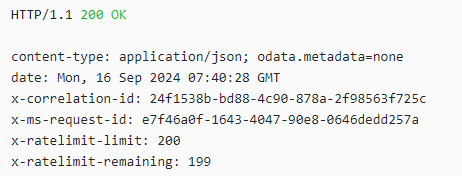Cryos API documentation - Rate limiting (throttling)
At Cryos, we have implemented rate limiting to control the number of incoming requests. It is designed to prevent abuse, ensure fair usage, and protect the API server from being overwhelmed by a large number of requests. Rate limiting is commonly used in APIs to manage resources, prevent denial-of-service attacks, and maintain overall system stability.
Here are the key concepts related to rate limiting in APIs:
Rate Limiting Parameters:
Requests per Time Period: The rate limit is defined by specifying the maximum number of requests a client can make within a certain time period. At Cryos, this is set to 60 requests per minute.
Renewal Period: This is the time the requester must wait if the request per time period has been abused. This is set to 60 seconds for Cryos.
HTTP Headers:
Limit: The total number of requests allowed within the time period.
Remaining: The number of requests remaining before reaching the limit.
Reset: The time at which the rate limit will be reset.
Response Codes:
429 Too Many Requests: If you exceed the allowed rate limit, the API server responds with a 429 status code, indicating that you have sent too many requests in a given time frame.
{
"statusCode": 429,
"message": "Rate limit is exceeded. Try again in 59 seconds."
}
Rate limiting is an important aspect of API management to ensure the stability, reliability, and fair usage of API resources.
To better emphasize the rate limit for users, a rate limit has been set to 200 every 2 minutes per subscription. We think that should be plenty to request in a 2 minutes time period. Each time you make a request the Rate limit will decrease.

